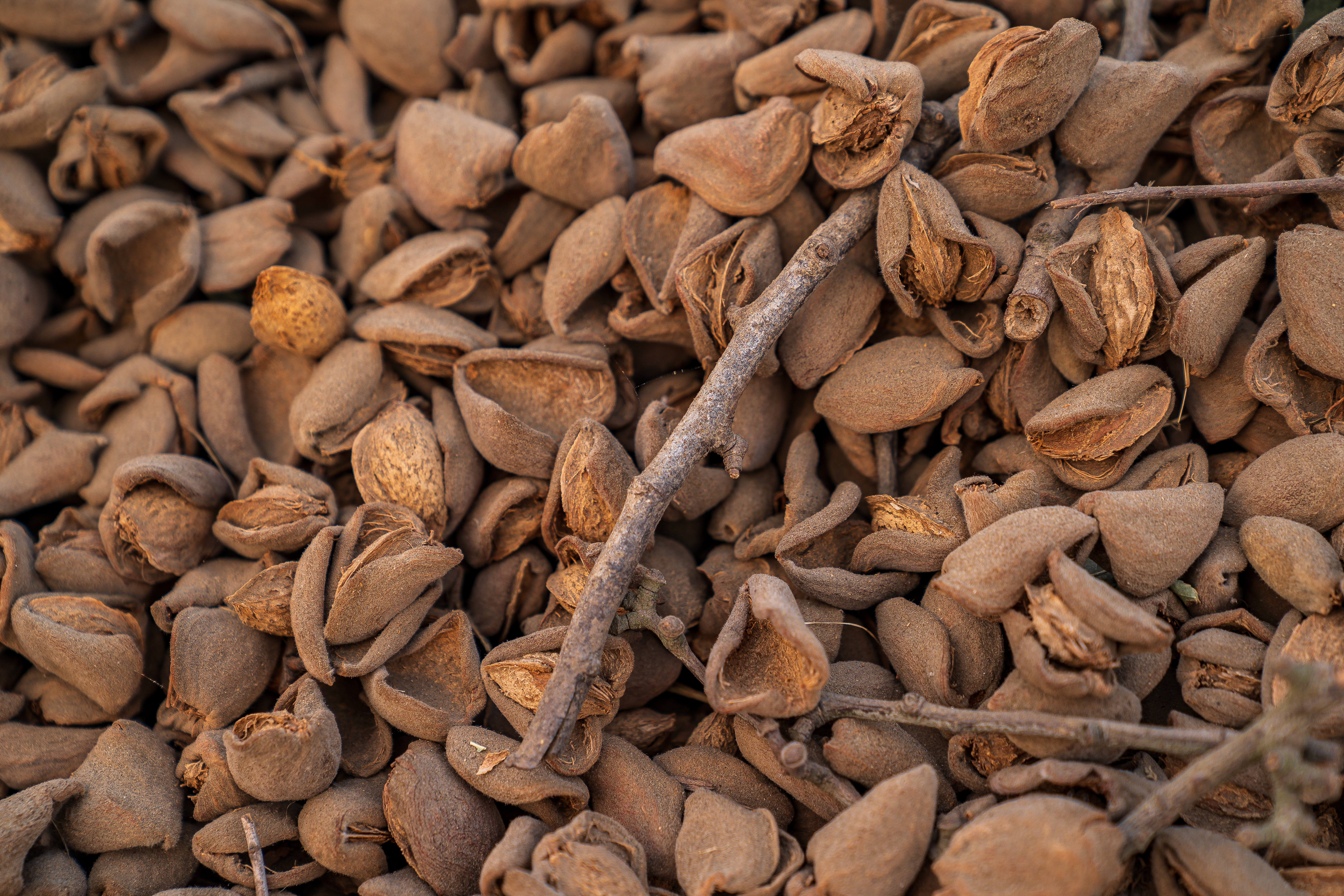When the volume of almonds produced in California orchards is high, growers can be asked to stockpile their nuts before they can be processed. That’s because most handlers have limited ability to store the product at their facilities after harvest when billions of pounds of nuts have been shaken from trees up and down the Central Valley.
“Early in the harvest season, a huller/sheller will typically have a lot of capacity to stockpile almond receipts from growers,” said Tim Birmingham, the Director of Quality Assurance and Industry Services for the Almond Board of California. “As harvest progresses, they may have limited space, thus necessitating the need to stockpile off-site.”
For growers unfamiliar with stockpiling nuts, the Almond Board has created an easy-to-understand guide of Stockpile Management Best Practices. It covers the key health- and safety-related concerns and offers proven ways to avoid running into trouble. Most of the tips are related to moisture control and making sure piles are well-drained and well-ventilated. Too much moisture runs the risk of mold growth and aflatoxin development, black mold on hulls or even concealed damage (a condition in which nuts develop off-color and off-flavors after roasting).
Here are four key questions for growers to answer before they create a stockpile:
Is there rain in the forecast?
If rain is in the immediate forecast, Birmingham advised growers not to shake almonds. Rain can create challenges for drying if almonds are on the ground. “It is better to leave them on the tree and shake as soon as possible after a rain event,” he said. Shaken almonds that are exposed to rain and not dried properly could lead to concealed damage problems later.
What’s the moisture level?
Almonds that contain too much moisture should not be stockpiled. The best practices document recommends nuts meet these three guidelines before being put into a stockpile:
- In-shell kernel moisture of less than 6%
- Total fruit (in-hull almond) moisture of less than 9%
- Hull moisture of less than 12%
A 2019 Almond Board story on stockpiles also offers more good advice about moisture levels. Prior to stockpiling, field samples should be taken either before sweeping or in the windrow. Because there can be great variability in the moisture levels of crop that is drying on the ground, growers should sample from areas where the moisture content is likely highest. The highest moisture levels prior to sweeping typically can be found in nuts on the north side of the canopy next to the trunk. For windrows, moisture levels are higher in the bottom layer of almonds.
Is there good drainage?
Birmingham said good drainage is important when choosing stockpile locations to help avoid any accumulation of water from rain or condensation. Stockpiles should be placed on a firm surface in an area that encourages optimal drainage – either with a raised or sloped bottom. Stockpiles also should be oriented in a north-south direction to help minimize condensation buildup and mold growth – which is usually worse on the north end of stockpiles.
Do the piles need venting?
Stockpiles should be checked on a regular basis and monitored for condensation, Birmingham advised. Stockpiles may need to be vented regularly to allow condensation to escape. This will help minimize mold formation.
Tarp selection can contribute to humidity levels in stockpiles as well. White-on-black tarps work best as they minimize temperature fluctuations. Clear tarps allow the greatest temperature fluctuations but are fine to use on dry, in-hull almonds that are below the moisture threshold. And white tarps fall somewhere in the middle in terms of their ability to minimize temperature fluctuations. When ongoing moisture monitoring indicates that levels are too high, growers should open up the tarps during the day to allow moisture to escape and cover again at night.
Additionally, it’s important to manage trash, dust and other potential contaminants, particularly pests like insects and rodents who can spread bacteria such as Salmonella and E. coli. When disease-carrying pests are found they should be treated, as needed, keeping detailed records if fumigants are used.

